Solid electrical insulating materials
Electrical insulating polymers
Polymers The term «high molecular weight compounds», the macromolecules of which consist of a large number of repeating units formed from the starting monomers.
The degree of polymerization is the number of monomer molecules combined into one polymer molecule. For example, polystyrene has a degree of polymerization of about 6000, and polyethylene has a degree of polymerization of 28,500. Polymer molecules are formed due to the breaking of double chemical bonds of monomer molecules. By their structure, polymers can be linear and spatial.
Linear polymers flexible, elastic and easily soluble. The linear structure of macromolecules contributes to the production of polymer fibers, rubbers, films.
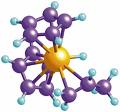 Spatial polymers have a greater stiffness than linear polymers and their softening occurs at very high temperatures. Space polymers are difficult to dissolve.
Spatial polymers have a greater stiffness than linear polymers and their softening occurs at very high temperatures. Space polymers are difficult to dissolve.
Thermoplastics are polymers capable of softening and hardening upon repeated heating and cooling.
Thermosetting polymers when heated undergo irreversible changes in properties and harden, acquiring significant mechanical strength and rigidity.
Polymers are very important in the production of many products in the electrical, electronic, radio engineering and other industries. They are used as separate components in the production of electrical insulation or directly.
Organosilicon polymers — high molecular organoelement compounds containing silicon atoms. The advantage of such materials is their reliable operation at temperatures from -65 ° C to + 200 ° C. For example, silicon silicon rubber, used in the manufacture of high voltage insulators. Natural resins such as shellac, rosin, and rubber are also classified as electrical insulating polymers.
Fibrous electrical insulating materials
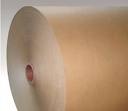 Fibrous called materials consisting of elongated particles - fibers. These include wood, paper, cardboard, fibers, textiles, synthetic fibers, fiberglass.
Fibrous called materials consisting of elongated particles - fibers. These include wood, paper, cardboard, fibers, textiles, synthetic fibers, fiberglass.
Fibrous materials have high dielectric strength and relatively low cost. However, they are hygroscopic and have a low heat resistance class: in the non-impregnated state — class Y, in the impregnated state — class A.
One of the first electrical insulating materials used in electrical engineering was wood... In its raw state, wood has very low and unstable insulating properties. Therefore, it is used as an electrical insulating or structural insulating material only in the impregnated state. Paraffin, oil, petroleum oil and resins are used as impregnating agents. However, impregnation does not completely eliminate the hygroscopicity of wood.In this regard, to improve moisture resistance, wooden parts are covered with insulating varnish or oil, followed by baking at high temperature.
Today, the following types of wood are most often used: beech, birch, oak, alder, maple. The wood is usually used for the production of insulating rods, various supports and fasteners.
In the manufacture of high-voltage capacitors, use capacitor paper - a high-quality thin (about 10 microns) paper with good insulating properties.
In cable technology, they use cable paper as insulation for high and low voltage power cables (thickness 0.1 mm;).
Semiconducting cable paper is used to shield the insulation of high voltage power cables. A layer of strips of this paper is applied to the conductive core and to the insulation of cables with a voltage of 20 kV and above.
General purpose electrical paper
Synthetic fiber papers
Cardboard differs from paper in that it is thicker. Cardboard is used in the impregnated state as interleaving and interphase insulation in transformer construction.
Fibri It is a multi-layered parchment board. Fibers are used as insulating and arching material. When exposed to an electric arc, the fiber decomposes, releasing a large amount of gases that contribute to extinguishing the arc. In this regard, fiber pipes are used for the production of "shooting" restraints.
Organic textiles are used as a protective covering for cables and in the insulation of electrical machines. Organic fabrics include: natural fiber materials, man-made fiber materials, and synthetic fiber materials.
 Natural fiber materials are of the following varieties: cotton yarn, cable yarn, cotton insulation tapes, insulation silk. These materials are used as top coats for insulation.
Natural fiber materials are of the following varieties: cotton yarn, cable yarn, cotton insulation tapes, insulation silk. These materials are used as top coats for insulation.
Artificial fiber materials have the following varieties: silk silk, acetate silk. Fabrics made from these fibers are durable and elastic.
Materials made of synthetic fibers have the following varieties: polyamide fibers (nylon), lavsan silk. These materials are used to insulate winding wires.
Impregnated fiber materials obtained by impregnation in electrical insulating varnishes or compositions of different materials from natural organic fibers. The combination of the high mechanical strength of the impregnated fabric with the high insulating properties of the impregnating compositions makes it possible to obtain materials with a range of properties, which has led to their wide use for electrical insulation purposes.
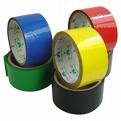 Impregnated fiber materials include: varnished cloth, varnished paper, varnished pipes and insulating tapes (electrical tape).
Impregnated fiber materials include: varnished cloth, varnished paper, varnished pipes and insulating tapes (electrical tape).
Lacquers widely used for insulation in electrical machines, apparatus, cable products in the form of coils, casings, gaskets, etc. One type of varnished cloth is fiberglass, which uses fiberglass as a base. Lack of varnished fabrics — increased thermal aging.
When the paper is impregnated with varnishes, varnished paper, which are cheaper than varnished fabrics and in some cases are their alternative. The disadvantage of lacquer paper is low mechanical strength.
Varnished pipes are used as seals and additional insulation.
Insulation tapes are single-sided and double-sided, depending on the presence of a rubber compound on one or both sides.
Electrical insulation of film and mica materials
Organic polymer films are thin and flexible materials that can be produced in long, rolled strips of varying widths. Due to their high insulating properties, the films are of particular interest for electrical insulation technologies: in electrical engineering, the construction of capacitors and the production of cable products.
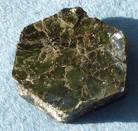 Polymer films are an important element in the insulation of low-voltage electrical machines (up to 1000 V), where they are used as winding insulation and winding box. The use of polymer films in cable technology makes it possible to create winding and assembly wires, as well as of power cables with high electrical and mechanical characteristics with relatively small insulation thickness. Film materials are also used as a dielectric for power capacitors.
Polymer films are an important element in the insulation of low-voltage electrical machines (up to 1000 V), where they are used as winding insulation and winding box. The use of polymer films in cable technology makes it possible to create winding and assembly wires, as well as of power cables with high electrical and mechanical characteristics with relatively small insulation thickness. Film materials are also used as a dielectric for power capacitors.
Mica Natural mineral electrical insulating material. Mica has high electrical strength, heat resistance, moisture resistance, mechanical strength and flexibility. Therefore, it is used as insulation for high voltage and high power electrical machines.
 Micanites Sheet or roll materials are glued together from individual mica petals using adhesive varnish or dry resin. Micanites are used as collector insulation and various insulating seals in electrical machines.
Micanites Sheet or roll materials are glued together from individual mica petals using adhesive varnish or dry resin. Micanites are used as collector insulation and various insulating seals in electrical machines.
Micalenta is a composite material of a single layer of mica plates glued together with varnish. Fiberglass is used as a substrate covering the mica on both sides.
Synthetic mica mica paper is used for production... There are two main types of insulation materials made from mica paper: mica and mica.
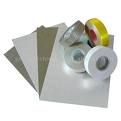 Cludinites are used in the insulation of electrical machines with a heat-resistant design (heat resistance class H) as duct insulation and turn-to-turn seals.
Cludinites are used in the insulation of electrical machines with a heat-resistant design (heat resistance class H) as duct insulation and turn-to-turn seals.
The field of application of mica includes formed articles of electrical machines: bushings, pipes, tubes, insulating cylinders of class F.
Tires and rubbers
 Natural rubber is a product found in a milky sap (latex) that is extracted from the trunks of rubber trees growing in tropical countries.
Natural rubber is a product found in a milky sap (latex) that is extracted from the trunks of rubber trees growing in tropical countries.
Synthetic rubbers are products of various polymerization processes of isoprene, butadiene and other organic compounds.
Rubber is a vulcanized multicomponent compound based on rubber. Rubber is primarily used in cable products.
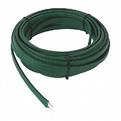 Cable ties are divided into two main classes: insulating and hose.
Cable ties are divided into two main classes: insulating and hose.
Insulating tires serve to insulate conductive wires. The rubber mixture is applied to the core in the form of a tube of a certain thickness and vulcanized in this form.
Hose rubbers are used as protective casings for portable cables and wires, as such products require maximum flexibility.
Semiconducting rubbers are used to shield flexible cables.
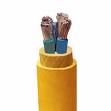 Tire repair is used for splicing and repairing cables.
Tire repair is used for splicing and repairing cables.
The use of rubbers in cable products allows them to provide them with the necessary flexibility, resistance to moisture, oil and oil resistance, the ability not to spread combustion, using modern rubbers and other ingredients in rubber compounds.
Electric insulating glasses
 The glassy state is a kind of amorphous.In terms of hardness, brittleness and elasticity, glass is similar to typical solids, but differs from them due to the lack of symmetry in the crystal lattice, characteristic of liquids. The most common are capacitor glasses (capacitor dielectric), mounting glasses (mounting parts, insulators, boards), glass lamps (bulbs and legs of lighting lamps, various electric vacuum devices), powdered glasses (glass solders, enamels, press fittings) and fiberglass.
The glassy state is a kind of amorphous.In terms of hardness, brittleness and elasticity, glass is similar to typical solids, but differs from them due to the lack of symmetry in the crystal lattice, characteristic of liquids. The most common are capacitor glasses (capacitor dielectric), mounting glasses (mounting parts, insulators, boards), glass lamps (bulbs and legs of lighting lamps, various electric vacuum devices), powdered glasses (glass solders, enamels, press fittings) and fiberglass.
Mikaleks The glass is filled with mica powder. This is an expensive material. Applications: High Power Lamp Holders, Air Condenser Panels, Inductor Combs, Switch Boards.
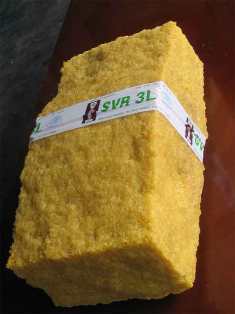
Natural rubber
